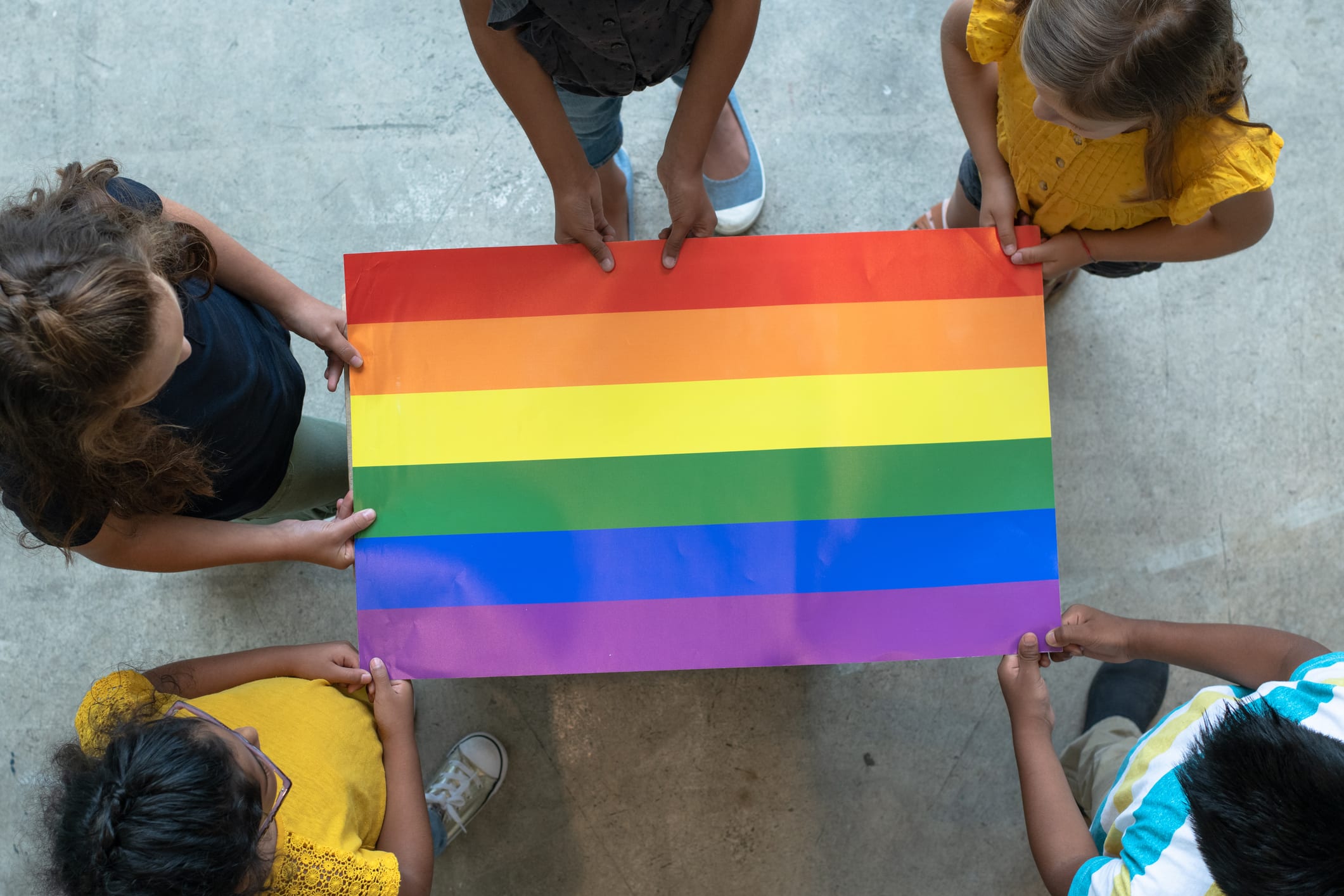In growing a safe space for diverse identities, we’re always seeking more immediate ways to stop, address, and prevent further harm caused by teasing. More than half of all teasing heard in schools is gender- or sexuality-based, and 75% of high schoolers surveyed heard homophobic remarks frequently. Stopping teasing is an important part of the larger work of creating a safe and welcoming space for all our students. A school that celebrates diversity protects against harm and actively normalizes diversity in pronoun, gender, sexuality, and family.
Some students hear statements like these daily, so if you hear something similar, intervene, stay curious, and never ignore the harm. Then, before you begin your conversation, ask yourself and your students: “What did you mean by that?”
1. When a student says: “You identify as trans? I identify as an attack helicopter.”
Other students hear: “You don’t deserve recognition. You are fictional.”
This statement is only used in transphobic attacks. The fictional experience invented for the occasion (the attack helicopter) gets compared to a real experience (being trans).
First, reassure the trans student: “Your identity and experience are real and deserve respect.” Second, ensure that the listeners and speaker know: “That language is unacceptable.” Ask what the speaker is trying to say and explain how their statement adds to the harm of mocking someone’s identity. You may use this to re-norm your learning space to actively promote diversity as strength, and state that teasing and bullying are never acceptable.
2. When a student says: “No homo.”
Other students hear: “Being gay is so bad that I would keep it a secret.”
Kids often say this after showing affection. Maybe they’ve seen adult friends punch or insult each other after a hug. Sometimes kids don’t even know what it means to be gay yet, or that the statement may disrespect people based on who they love.
Explain how hurtful this statement is to listeners. Remind students that expressing our feelings is a healthy part of how we communicate. Welcoming Schools’ quick responses for “that’s so gay” and GLSEN’s Safe Space Kit both have great specific responses. Take this chance to examine the often “straight-washed” history of many important figures and how gay people have thrived despite discrimination.
3. When a student says: “You throw like a girl.”
Other students hear: “No girls throw well.”
Explain to students that this statement hurts both the listener and all girls. Use your curriculum to feature the role and importance of women as a consistent and rich lens of exploration. This GLSEN activity, “That’s a Gender Stereotype!”, helps elementary school students identify many gender stereotypes and discuss how harmful and limiting they are for everyone. High school students can check out this activity comparing testosterone levels in elite athletes. All our students need gender-diverse role models to understand a gender-diverse world.
4. When a student says: “What’s in your pants? Are you a boy or a girl?”
Other students hear: “I have the power to decide your gender and to access your body.”
Safe learning spaces honor a student’s dignity and privacy, but curiosity can harm if we don’t guide their conversations as they explore what identity means. First, confirm the student’s right to privacy and safety and accept their gender expression no matter what. Next, ask the speaker what they mean. Remind students they have the right to decide what to do with their own bodies. Discuss how hurtful it is to reduce someone to one thing about them. Some great books about gender identity can frame student discussions, and several free K-12 science resources include biological diversity.
5. When a student says: “But you look like a boy!”
Other students hear: “I get to decide who you are based on how I see you.”
Absolutely practice your answers to common questions about all appearances from students who are still learning about their own. Remind students that there is no one way someone can look, sound, or dress. Affirm that everyone at school can look the way they want for learning. Explore with students common myths about gender and what gender means to them.
6. When a student says: “That’s not a real family! You don’t have a dad!”
Other students hear: “Because our families are different, yours is not as good as mine.”
“What makes a family is love.” Many resources can begin conversations about diverse families. Elementary students may recognize and celebrate diversity through “My Family Rocks”, and this Scholastic unit affirms student narratives about how all families love and care. Older students often excitedly question their assumptions when they see the rich showcase of family, gender, and behavior in science.
How do you address gender- and sexuality-based teasing? Come and share in our WeAreTeachers HELPLINE group on Facebook.
Plus, Talking to Kids About Science in a Gender-Inclusive Way.


